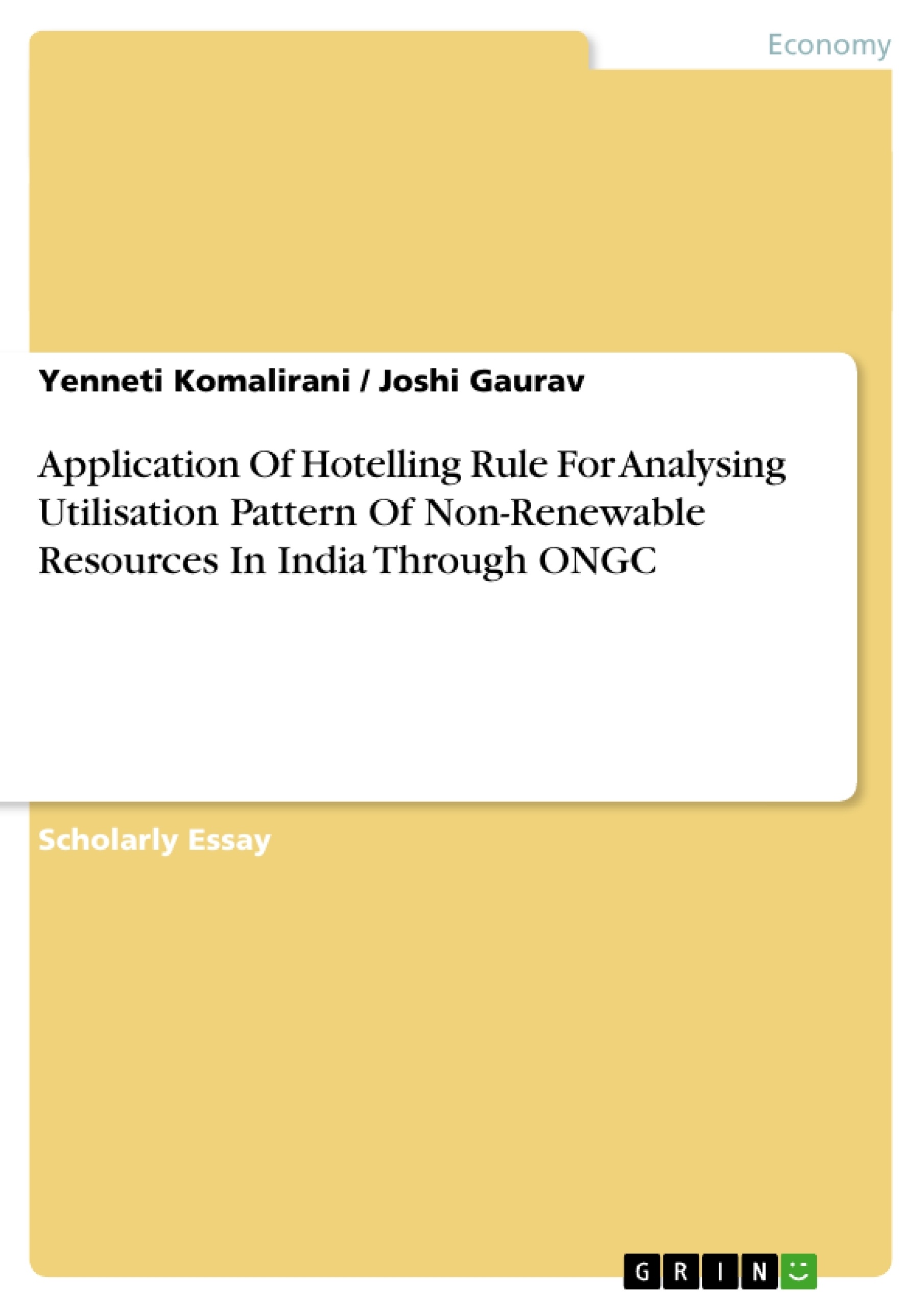Hotteling Rule was evolved by Harold Hotteling as a result of analysis of non-renewable resource management, is a distinct theory which gives us clear idea of non renewable resource economics and provides a close insight into long run behaviour of price and supply in market for non renewable resources.
The paper deals with the application of Hotteling rule to Oil and Natural Gas Corporation (ONGC) to find the sustainability of the oil resources and analyse the reserve trend scenarios. ONGC is the only fully–integrated petroleum company in India, operating along the entire hydrocarbon value chain. It also contributes to over 78% of India’s oil and gas production. The analysis was carried out taking 2000-01 as the base year till 2007-08 to find out the sustainability of the oil reserves of ONGC.
It is found that according to the baseline scenario, the resources would deplete in 3-4 years, but as every year new reserves are found, the resource is being sustainable since 2000. Thus Hotteling Rule is said to be indifferent for the firm and the firm is said to sustainable.
The paper also carries the assessment of the exhaustion rate of oil and natural gas in India considering 1990 as the base year. The exhaustion rate of the reserves is found to be 13 to 21 years until and unless there is a new reserve replacement.
Table of Contents
- Abstract
- 1. Introduction
- 1.1 Figure 1 Reserves replacement graphs
- 1.2 Example of Hotelling Rule Application
- 1.3 Concluding Remarks
- 2. Background to the Study- ONGC
- 2.1 Competitive strength
- 3: Application of Hotteling rule to ONGC
- 3.1 Methodology
- Table 1 Application of Hotteling Rule to ONGC
- Figure 2 The figure shows the profit increase rate over the years with the sale value of mineral from 2001-08 in Million Rs
Objectives and Key Themes
This paper applies the Hotelling Rule to analyze the sustainability of oil resources and reserve trends at Oil and Natural Gas Corporation (ONGC), India's largest integrated petroleum company. The study examines the long-term behavior of price and supply for non-renewable resources within the context of ONGC's operations.
- Application of the Hotelling Rule to a real-world case study (ONGC).
- Analysis of the sustainability of non-renewable resources (oil and gas) in India.
- Assessment of ONGC's profitability and reserve trends.
- Examination of the relationship between resource depletion, price, and interest rates.
- Evaluation of the long-term implications of non-renewable resource management.
Chapter Summaries
The introduction explains the Hotelling Rule, a theory predicting that non-renewable resource prices rise at the rate of interest. It provides a simple example of the rule's application. Chapter 2 provides background information on ONGC, highlighting its competitive strengths and operational details. Chapter 3 details the methodology used to apply the Hotelling Rule to ONGC, including calculations based on ONGC's financial data from 2000-01 to 2007-08. The chapter presents data on profitability and reserve sustainability, indicating the firm's profitability and sustainability based on their analysis. Figures and tables are used to visualize the results.
Keywords
Hotelling Rule, Non-renewable resources, Oil and Natural Gas Corporation (ONGC), Resource depletion, Sustainability, Exhaustion rate, Reserve replacement, Profitability, Competitive market.
- Quote paper
- Yenneti Komalirani (Author), Joshi Gaurav (Author), 2009, Application Of Hotelling Rule For Analysing Utilisation Pattern Of Non-Renewable Resources In India Through ONGC, Munich, GRIN Verlag, https://www.grin.com/document/183551




